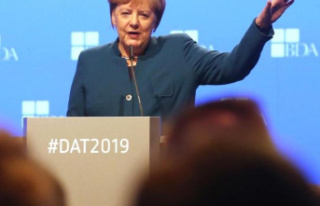More than three months after the start of the demonstrations in Sri Lanka, the anger has not subsided in this country. But two facts could bring some calm to an island in deep economic and social distress. This Thursday, July 14, President Gotabaya Rajapaksa officially announced his resignation and the demonstrators took the decision to leave the public buildings they were occupying.
Facts. The letter of resignation was, according to the security services, ready for several days. This Thursday, it was sent to parliament by email, marking the end of the era of the Rajapaksa in power. If the letter was sent by computer, it is because the president was forced to flee his country to escape the anger of the population.
Saturday, July 9, he first had to abandon his residence, stormed by demonstrators. After a first abortive attempt to escape, he took a plane to Malé, the capital of the Maldives archipelago, on Wednesday July 13. Conspired upon his arrival at the airport, he then spent a night in a luxury hotel in the city, before flying to Singapore on Thursday, from where he sent his resignation email.
The head of state is held responsible for the severe crisis affecting the island, where inflation has reached 70% and which is suffering from serious food shortages. The result of bad decisions by Gotabaya Rajapaksa, in power since 2019, but whose family has been very influential in political spheres for decades. Among the disastrous measures, let us quote the prohibition of the importation of phytosanitary chemical products, having had the consequence of drastically reducing the national agricultural production.
Sri Lankan Prime Minister Ranil Wickremesinghe was sworn in as interim president on July 14 after the official resignation of Gotabaya Rajapaksa. "The president has officially resigned from office," Speaker of Parliament Mahinda Yapa Abeywardana told reporters on Friday, the day after the letter of resignation was sent by email. Shortly after, Ranil Wickremesinghe was sworn in before the President of the Supreme Court, thus officially becoming the interim President of the country, as provided for in the constitution. Parliament will convene on Wednesday to elect a successor to Gotabaya Rajapaksa from among MPs. The new president will assume his functions until the end of the initial mandate, that is to say November 2024.
The context. The president's flight was necessitated by the determination of hundreds of thousands of Sri Lankans to oust him from power. After taking over the residence of the Head of State, the demonstrators succeeded in entering, on Wednesday July 13, the offices of Ranil Wickremesinga, whose house was burnt down on July 9. The latter is just as hated by the population as its former leader, especially since he ordered the security forces to restore calm through violence.
This Thursday, the demonstrators announced that they would withdraw from all the public places they occupied while "continuing the fight". The resignation of Gotabaya Rajapaksa is, without a doubt, a first victory for them.
Why it matters. If the crisis has become political, it is because it is primarily social, and on the very verge of becoming humanitarian. The current government is unable to finance essential imports to feed a population of 22 million.
Sri Lanka must, in addition, repay an external debt amounting to 51 billion dollars. The country has almost no more petrol reserves, so much so that the government has gone so far as to order the closure of certain administrative and educational establishments in order to reduce the movement of the population.












